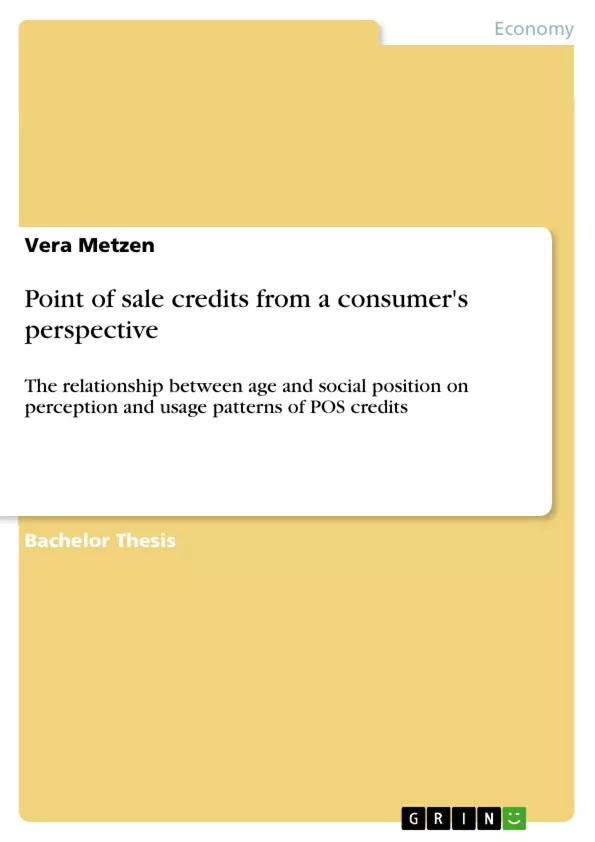Being a traditional emergency credit for the poorer members of society for a long time, most people thought that POS credits were ‘unsolid’ and thus did not use it. Nowadays, this situation has changed for a variety of reasons and several authors have under-taken research on the subject in general or from a retailer’s perspective.
This piece of work focuses on the consumer’s perspective of POS credits and shows that several factors, such as age, discretionary income and social position determine a person’s perception and usage pattern of the POS credit.
In order to identify these relationships the author has undertaken primary and secon-dary research. The knowledge of authors who have previously written on the subject has been used to design a questionnaire that allows for a considerable analysis of the above mentioned relationships.
For primary research 100 anonymous people have been questioned in a shopping cen-tre in Heidelberg, Germany using an interview administered quantitative questionnaire.
Most of the results are in line with the findings of other authors. However, primary re-search shows that society as a whole still believes that a POS credit is an emergency credit and that most people’s perception of the credit is not as favourable as it is often assumed. Moreover, specific reasons for a positive or negative perception are strongly related to a person’s age rather than to social position.
Most of users of this financing tool seem to use it for acquiring non-necessary prestig-ious items. The estimated price of the item rises with the person’s age and income.
Main motives for using the credit instead of a bank loan could not be identified due to the sample’s size. However, primary research implies that using POS credits might often be subject to previous friends’ experience.
Inhaltsverzeichnis (Table of Contents)
- Introduction
- Credit and consumer society
- Definitions
- Consumer credit
- POS Credit
- Research objectives
- Method
- Discussion
- Literature review
- The history of POS credits
- Usage and perception of POS credits over time
- Credit and consumer society
- The consumers' perspective
- Value shifts in society
- Reasons for the use of POS credits instead of a bank loan
- Discretionary income
- Convenience
- Solvency investigation
- Psychological barriers
- Social position
- Consumer segmentation
- Opaschowski's consumer segmentation
- Sinus milieus
- Methodology
- Quantitative questionnaire
- Section A
- Section B
- Section C
- Data collection process
- The sample
- Justification of the method
- Limitations
- Summary of the findings
- The subject of POS credits in connection with a person's age
- General perception
- Approval of positive POS characteristics
- Approval of negative POS credit characteristics
- Likeliness to use a POS credit in the future
- Reasoning for not having used a POS credit to present
- POS credit users
- Attitudes on POS credits in connection with social position
- General attitude on POS credits
- Approval of positive POS credit characteristics among people of different social positions
- Approval of negative POS credit characteristics among people of different social position
- Likeliness to use a POS credit in the future
- Reasons for not having used a POS credit to present
- POS credit users
- General credit usage
- Credit cost estimation in relation to discretionary income
- Discussion of the findings
- The influence of a person's age on POS credit perception
- Age in relation to the likeliness to use a POS credit in the future
- POS credit usage within different age groups
- Motives
- The influence of social position
- The influence of social position on POS credit perception
- Social position and the likeliness of future POS credit usage
- The relationship between social position and POS credit usage
- Motives
- Quote paper
- Vera Metzen (Author), 2009, Point of sale credits from a consumer's perspective , Munich, GRIN Verlag, https://www.grin.com/document/168299



